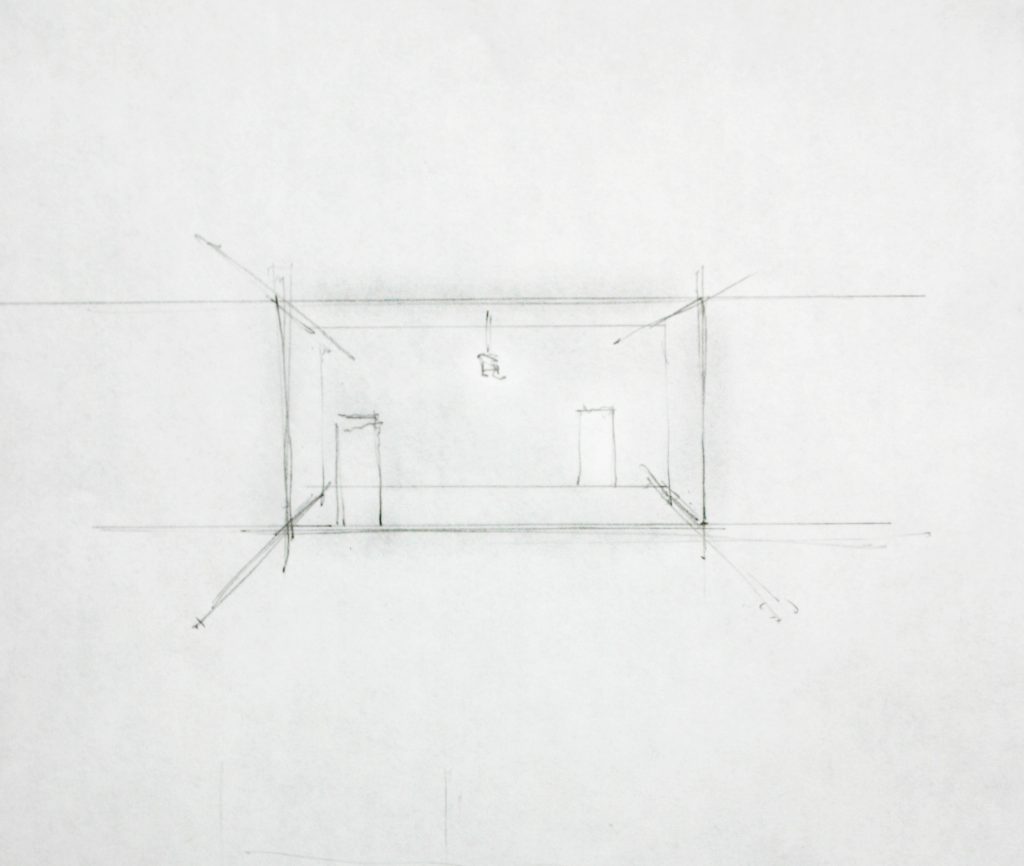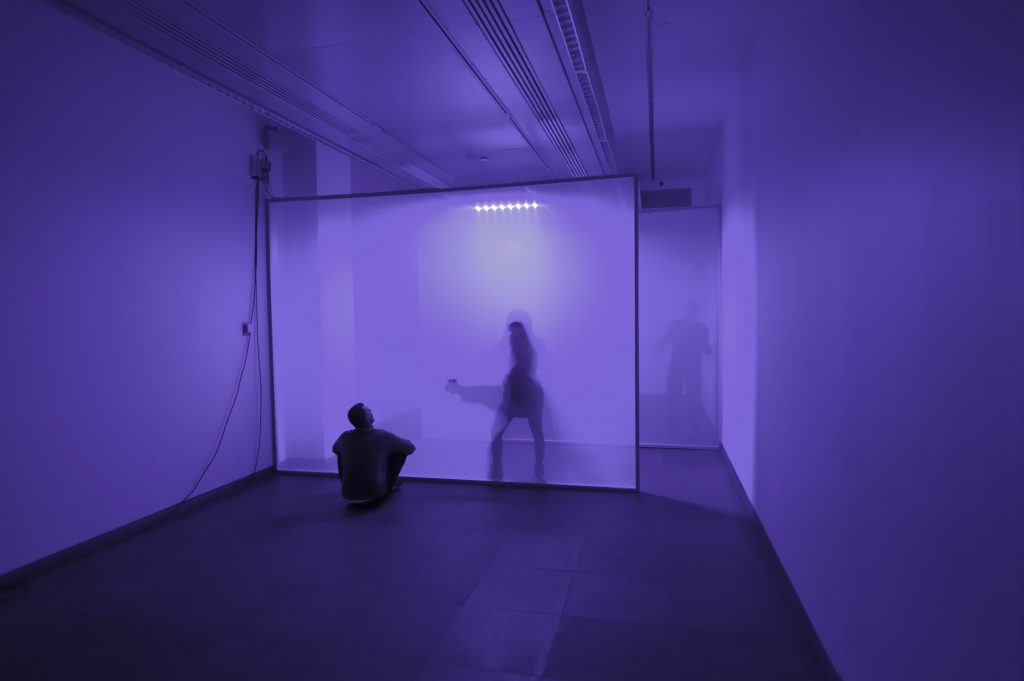In Situ

Concept sketch for The Passage Room, 2009, ACFNY

The Passage Room, 2009, ACFNY
Scrims, Aluminum, LEDs, video projection, Spectro-Sonic Refrequencer
9.5′ (h) × 16′ (w) × 30′ (d)
The Passage Room is a site-specific light and sound installation, which investigates the boundary between manufactured states and perceptual events. It is an architectural intervention of the main exhibition hall of the Raimund Abraham-designed Austrian Cultural Forum New York, a space limited by its extremely narrow footprint. The installation is devised with two offset, parallel scrim walls that intersect the space midway, perpendicularly redoubling the narrow layout of the space and compressing its focal point to a passage at its center. The translucent walls, flooded with purple light emanating from LEDs at the installation’s midpoint, forms a constricted “passage room” which stages spectators as part of the sculpture. When viewed on approach, the narrow passage gently veils its interior, revealing everything and everyone in it. However, while inside, the scrims appear as opaque fields of color and the space outside the scrims becomes obscured. Viewers become participants, and participants become performers, blurring the boundary between subject and object, seeing and being seen. Passing through the installation, visual planes appear to open and close depending on the viewer’s position within the work, creating a constantly shifting experience. A modulating sound field, generated by the light, is superimposed onto the work’s layered setting. The LEDs at the center of the installation emit wavelengths of light from opposite ends of the visible spectrum — red and blue — which are experienced as purple, a non-spectral color. Based on scientific method and an algorithmic conversion, the electromagnetic waves of red and blue light are transposed onto mechanical waves of sound through Spectro-Sonic refrequencing, rearticulating light waves into sound waves, making purple audible. The Passage Room’s physical and virtual architecture explores the limits of our sensory apparatus through an interface of digitally reconfigured information and naturally occurring perceptual phenomena.